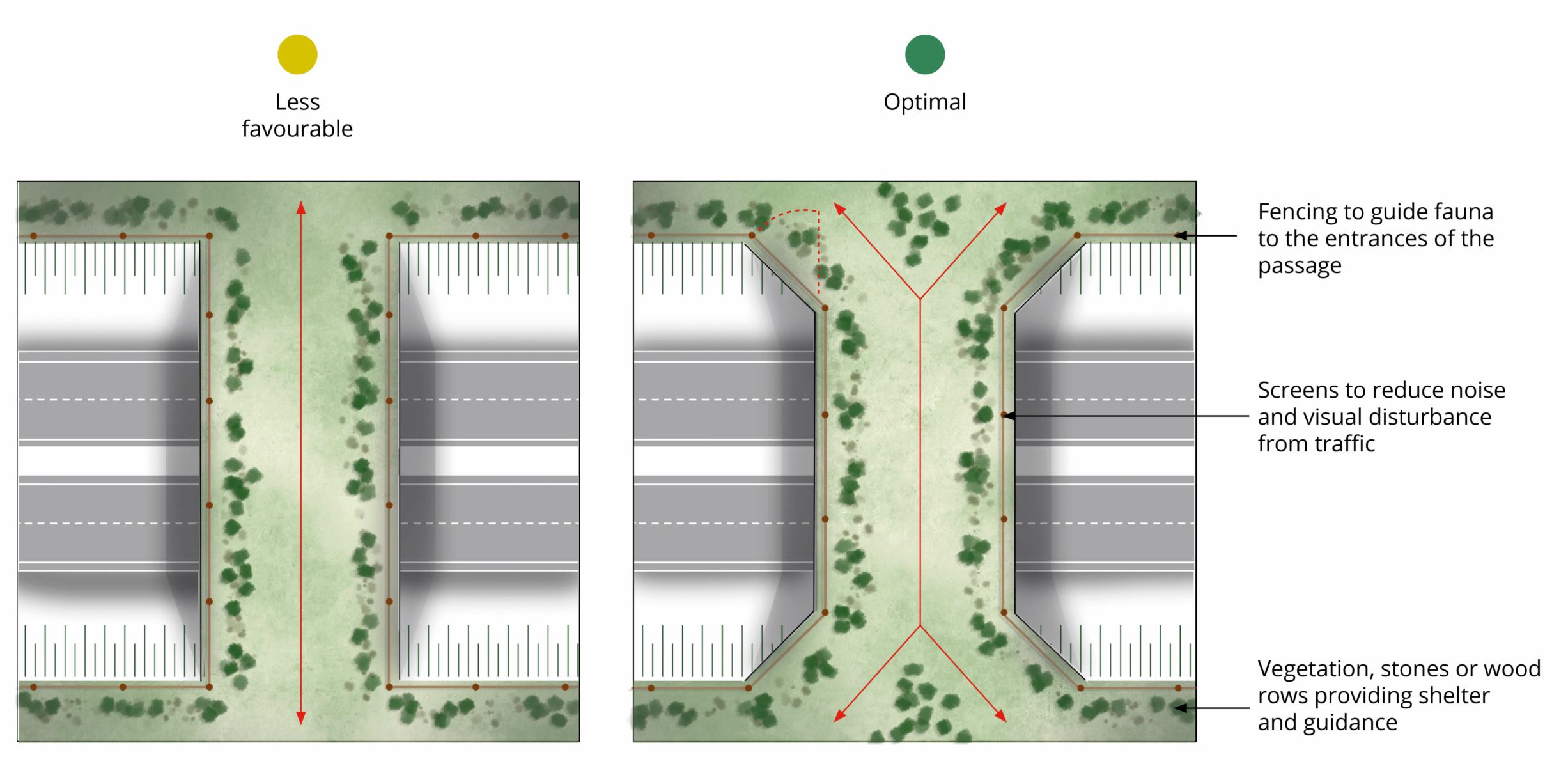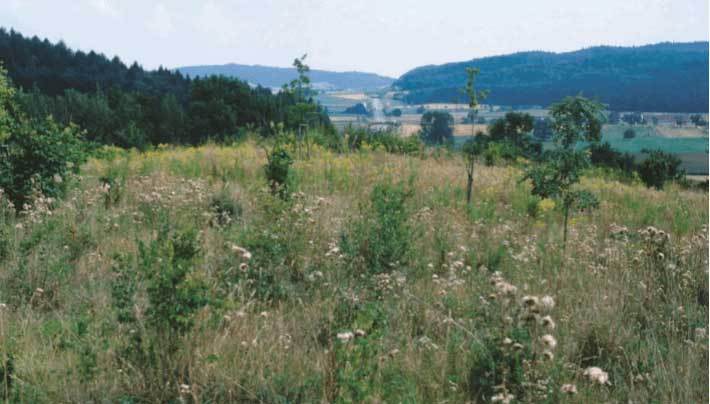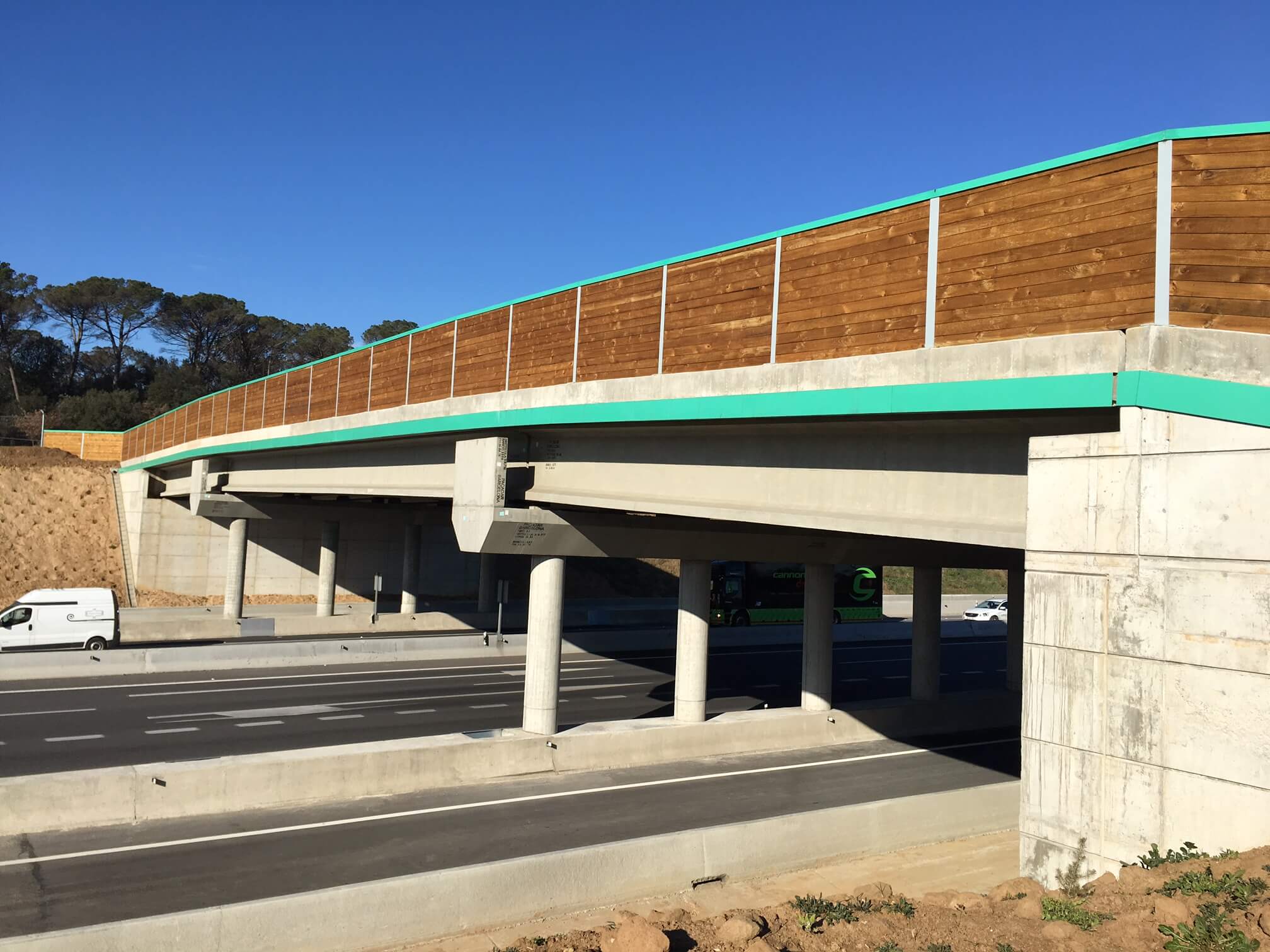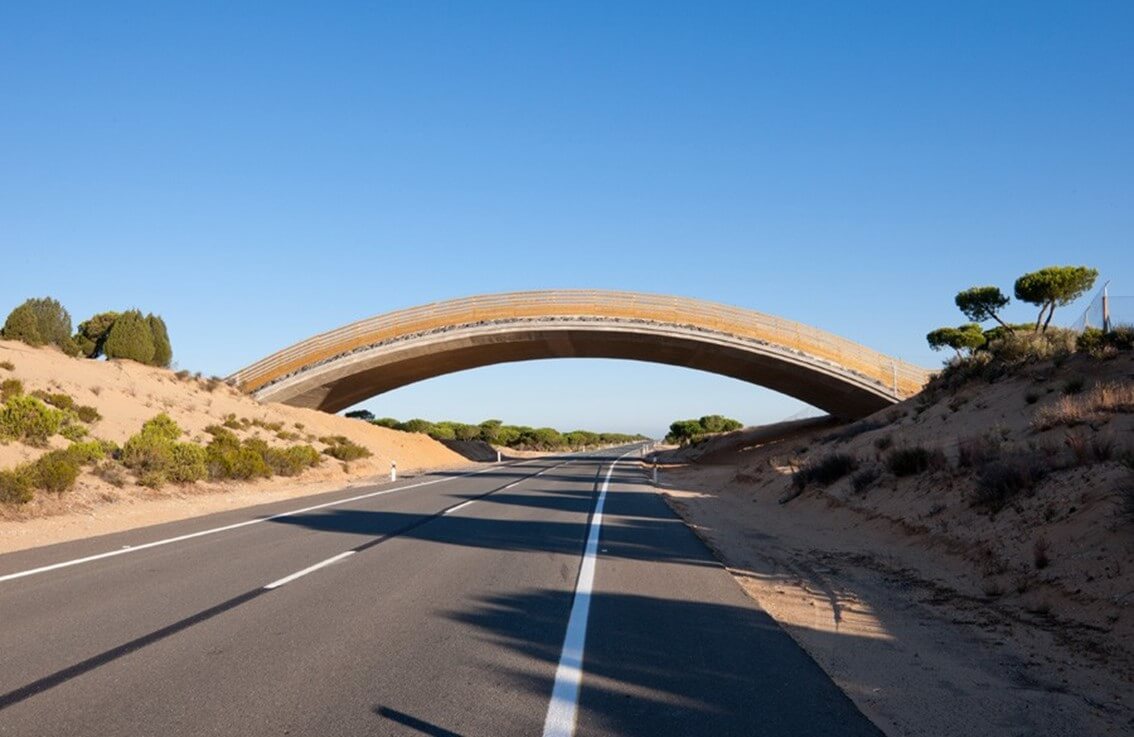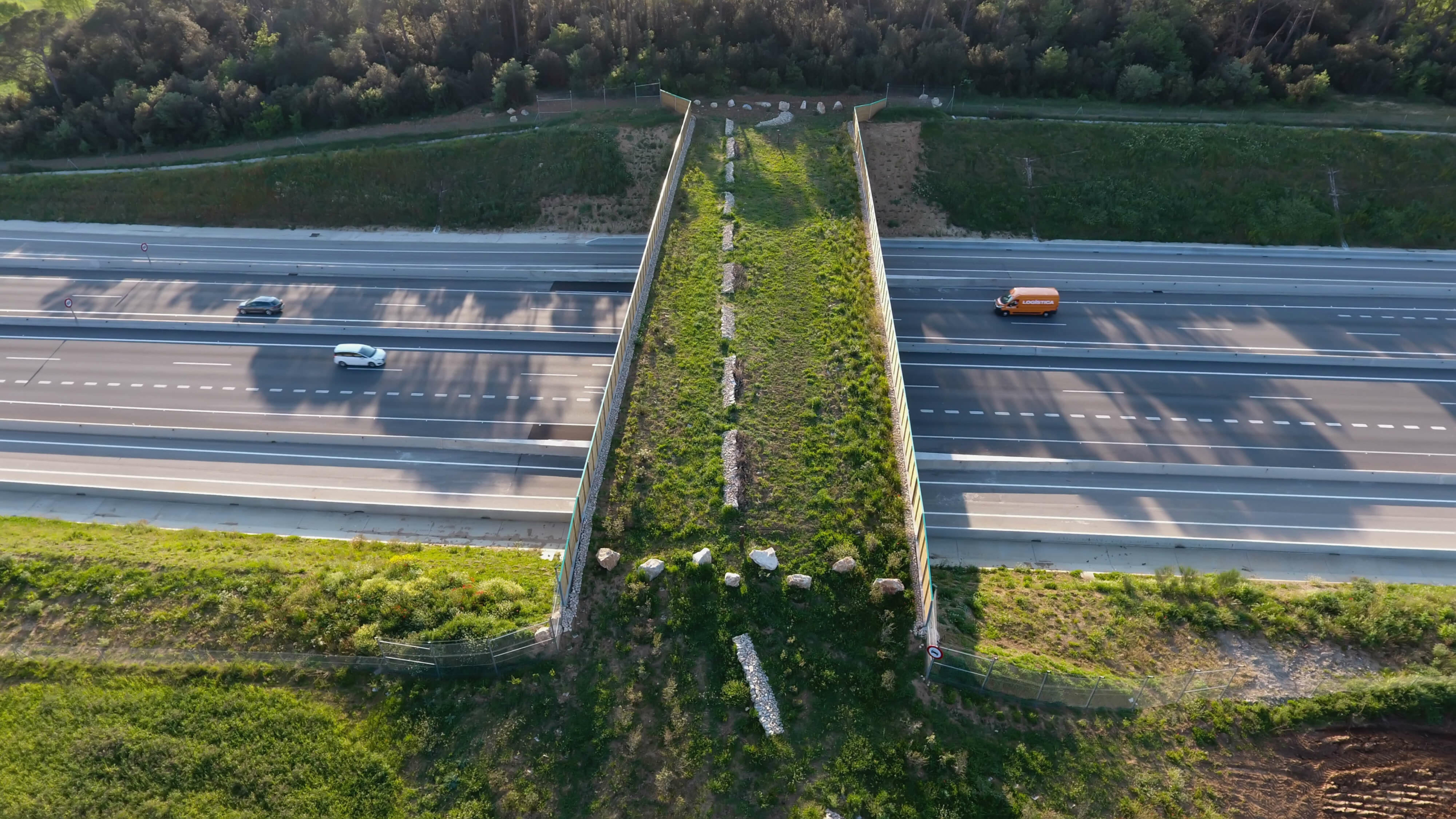General description and targets
Landscape and wildlife overpasses are purpose-built structures which enhance connectivity and provide a safe crossing point for a wide diversity of species. They are usually built over large transport infrastructure such as highways with several lanes, high-speed railway lines or a combination of infrastructure types. They are costly but effective means of enhancing ecological connectivity and minimising the fragmentation effects of transport infrastructure for terrestrial species and even aquatic species in certain cases.
With regard to their goals, the main difference between a landscape overpass and a wildlife overpass is that the former aims to provide connections for a multitude of species at landscape and ecosystem level while the latter provides a crossing point for several target species at population/meta-population level. The main structural difference between these two types of wildlife passages are the dimensions, and particularly width, because the wider an overpass, the better the potential for ecological restoration and the more functions it encompasses (Figure 5.5.4). Because the two are distinguished by a convention defined by a recommended width (Table 5.3) any deviations below the recommended width should be justified.
Landscape and wildlife overpasses can be designed in various ways, for example as cut-and-cover tunnels or by adapting the design of bridges for traffic. Bored-out tunnels often have the same function as landscape bridges. They avoid habitat fragmentation by keeping the natural habitat intact. They are therefore not dealt with in this chapter (see Chapter 4 – Integration of infrastructure into the landscape).

Width, design and vegetation should be adapted to the conditions of the ecosystems and target species living in the surrounding areas, including ungulates, large carnivore and other mammals, as well as providing habitat connections for reptiles, amphibians and invertebrates. These structures also act as flight guides for birds, bats, butterflies and other flying insects, reducing mortality and enhancing the movement of these animals which may otherwise be reluctant to cross open infrastructure surfaces.
Landscaping of the surfaces and entrances according to the goals for the overpass and its target species is critical to achieving maximum benefits. For small animals, the wildlife passage must include different types of habitat corridors providing refuges and food. For larger mammals, the width and location of an overpass as well as screening to reduce disturbance are critical to success.
Costly constructions like wildlife overpasses and especially landscape overpasses should not be built just for one or very few target species, but to connect habitats at ecosystem level. This requires providing ecological restoration by including a diversity of habitat conditions similar to those existing on either side of the infrastructure, taking into account structure and composition of plant communities, and environmental factors such as soil type, humidity, temperature and light. Using an overpass to connect forests on either side of the infrastructure requires that similar habitat conditions are provided on the overpass, and where planting trees is not an option because of forest fire risks or potential damage from roots to the infrastructure, rows of bushes could provide an alternative.
Location
The location of overpasses must be tailored to the presence and behaviour of the target habitat and species (see Section 5.5 – Wildlife passages. General recommendations), and to ecological network priority areas, which must be safeguarded for the long term.
- For large mammals, an overpass should be located along paths they traditionally use or as close as possible. The paths can be determined by habitat modelling suitability or with the help of fieldwork, e.g. mapping tracks in the snow or on marble dust, camera-traps, night censuses using spotlights, census of road kills, or by asking local people using specific questionnaires.
- Avoid areas where human activity causes disturbance.
- Avoid sections with large differences in level or embankments.
- Choose the location in relation to other crossing possibilities for animals.
- Where target species rely on a particular habitat type, the overpass and habitat must both be within reach of the animals providing an appropriate connection between them.
Dimensions
Passage dimensions depend primarily on the target species and habitat conditions so can vary as shown in Table 5.3. In general, larger mammals require wider overpasses than small vertebrates. However, small vertebrates and particularly invertebrates rely more on the provision of special habitat features, which can only be provided on relatively wide passages with habitat restoration. To provide connections for a maximum number of target species, the choice of dimension must be based on the species which requires the largest size. The width of an overpass is given here from the perspective of the user of the overpass. Infrastructure designers and constructors usually call this the length, i.e. the stretch of the road/railway line that is covered by the overpass.
Landscape overpasses
The recommended minimum width for ecoducts in European standards ranges from 50 to 80 m (Table 5.3). This enables the establishment of different habitats to provide a connection at ecosystem level (Figure 5.5.4A). The optimal width depends on the diversity and conservation importance of the habitats that require connection. In areas which are highly important for ecological connectivity, a landscape bridge could need to be several hundred metres wide to preserve connectivity of all ecosystems in the landscape.
Wildlife overpasses
The recommended minimum width for wildlife overpasses in European standards ranges from 20 to 50 m (Table 5.3) between the lateral fences or screens (Figure 5.5.4B). This permits the planting on the overpass of a diversity of vegetation that attracts multiple species. For small vertebrates and invertebrates, the vegetation and conditions must be designed to resemble as much as possible those adjacent to the overpass, forming a suitable habitat corridor.
A width below 20 m is not recommended. Experience with mammals has shown that while individuals familiar with the local situation may use narrower overpasses, the overall frequency of use is generally lower than on those that are wider. Some species specifically avoid using narrower overpasses. In some cases, a funnel-shaped structure with a minimum width below 20 m but an entrance width of c. 40 m may be used even by large mammals, particularly where the topography has a channelling effect leading the animals directly onto the crossing.
Length of the overpass should be minimized by angling the walls at the entrances to open into the surrounding landscape immediately after bridging the transport infrastructure (Figure 5.5.5).
Width of the structure should increase with the length of the overpass, i.e. an overpass across a six-lane motorway has to be wider than one over a small local road or railway. The recommended minimum width to length ratio in European standards ranges from 0.4 to 0.8 m (Table 5.3).
Vegetation
The aim is not only to guide target species and the maximum variety of other animals across the overpass but to connect the target habitats and all ecosystems in the landscape.
Vegetation on the overpass should reflect the habitats situated on either side of the infrastructure (Figure 5.5.6). Dense vegetation including bushes and/or trees must be located at both sides of the entrances to provide refuge and guide the animals though the passage. Nevertheless, vegetation should be kept low just in front of the entrance, so as not to deter ungulates.
Only plant species native to the local area should be used in the restoration.
Sowing grass/herb vegetation is not always necessary. Spontaneous establishment of plants can lead to good results (Figure 5.5.7).
Instead of using expensive seed mixtures, the transfer of seed bank material (hay, topsoil) from areas adjacent to the overpass is recommended.
Hedge-like installations along the edges of the structure provide refuges for small animals and a guiding line for larger mammal species. It also may offer cover and protection from light and noise from the road or railway.
Tree roots can create maintenance problems on landscape bridges. The choice of suitable tree species or bushes should take maintenance and traffic safety into account.
Planting a variety of local species that flourish at different periods of the year could feed target pollinator species. Breeding sites or refuges could also be provided to enhance pollinator presence.
Plant species which are preferred food sources can be used to attract herbivores and insects to the overpass.
Soil cover
Soil is a prerequisite for vegetation and depth depends on the habitat types.
Recommended topsoil depths are: Grass/herbs: 0.3 m; Bushes/shrubs: 0.6 m; Trees: 1.5 m (only landscape bridges). Depending on the type of vegetation to be favoured, soil depth can be varied, giving a varied micro-relief and lowering costs.
Nutrient poor topsoil or special mixtures can be used.
Fertilisation must be avoided
Screening
Screening aims to reduce the disturbance to animals from light or noise (Figure 5.5.8). Artificial screens can be installed on relatively narrow overpasses. On landscape overpasses of 50 m upwards, hedges on either side, preferably on small earth mounds, are sufficient.
- The height of side screens should reach about 2 m. In that case, no fences are needed on lateral sides of the overpass.
- On overpasses less than 20 m wide (recommended only in special situations, see paragraph on width) high screens should be avoided as they may create an off-putting tunnel effect for animals.
- To maximise the width that can be used by animals, the screens are best placed at the outer edge of the structure.
- Screens should not only be limited to the sides of the overpass but extend at least 50 m on both sides along the perimeter of the infrastructure.
- Screens have to be properly connected to fencing along the road.
- Earth mounds at the outer edge of the overpass and extending along the transport infrastructure make good screens. They are particularly suitable for wide landscape bridges.
- Dense hedges used as screens are best placed on a low earth mound.
Fences
Fences are needed to guide animals to an appropriate wildlife passage. Design and specifications are given in detail in Section 5.2 – Fencing.
- Fences are essential on the outer edge of the passage if no screens are built.
- Fences on both sides of the passage need a seamless connection to fences alongside the infrastructure.
Design
There are many possible construction types. The choice depends mainly on topography, soil stability, cost, landscape, aesthetics and local design traditions. The following examples are chosen to provide ideas for the construction engineer and to highlight features which are important to ensure effectiveness for wildlife.
Construction principles relevant for wildlife are listed below:
- Leading the infrastructure through a natural or artificial cutting allows an overpass to be built on the level of the adjacent land (see Chapter 4 – Integration of infrastructure into the landscape).
- Where the level of the overpass is higher than that of the adjacent land, access ramps should not be too steep and should be well embedded in the adjacent landscape (Figure 5.5.9). So far there is little knowledge on the maximum gradient tolerated by different animals. In hilly areas steeper gradients may be more acceptable than in flat regions. Some existing overpasses that are used by animals have gradients from 16% (Hungary) to 25% (Switzerland) in flat landscapes to 30% or more in mountainous regions.
- Shape and materials should ensure that the necessary features (soil cover, vegetation) and the connection to the adjacent land can be achieved (Figure 5.5.10; Figure 5.5.11).
- On existing roads, the use of prefabricated arches reduces construction time at the site (Figure 5.5.12 and Figure 5.5.13).
- In order to best guide the species towards the entrance to the passage and to limit the length of the crossing, building angled lateral walls to widen the entrance to the passage is recommended (Figure 5.5.5B).
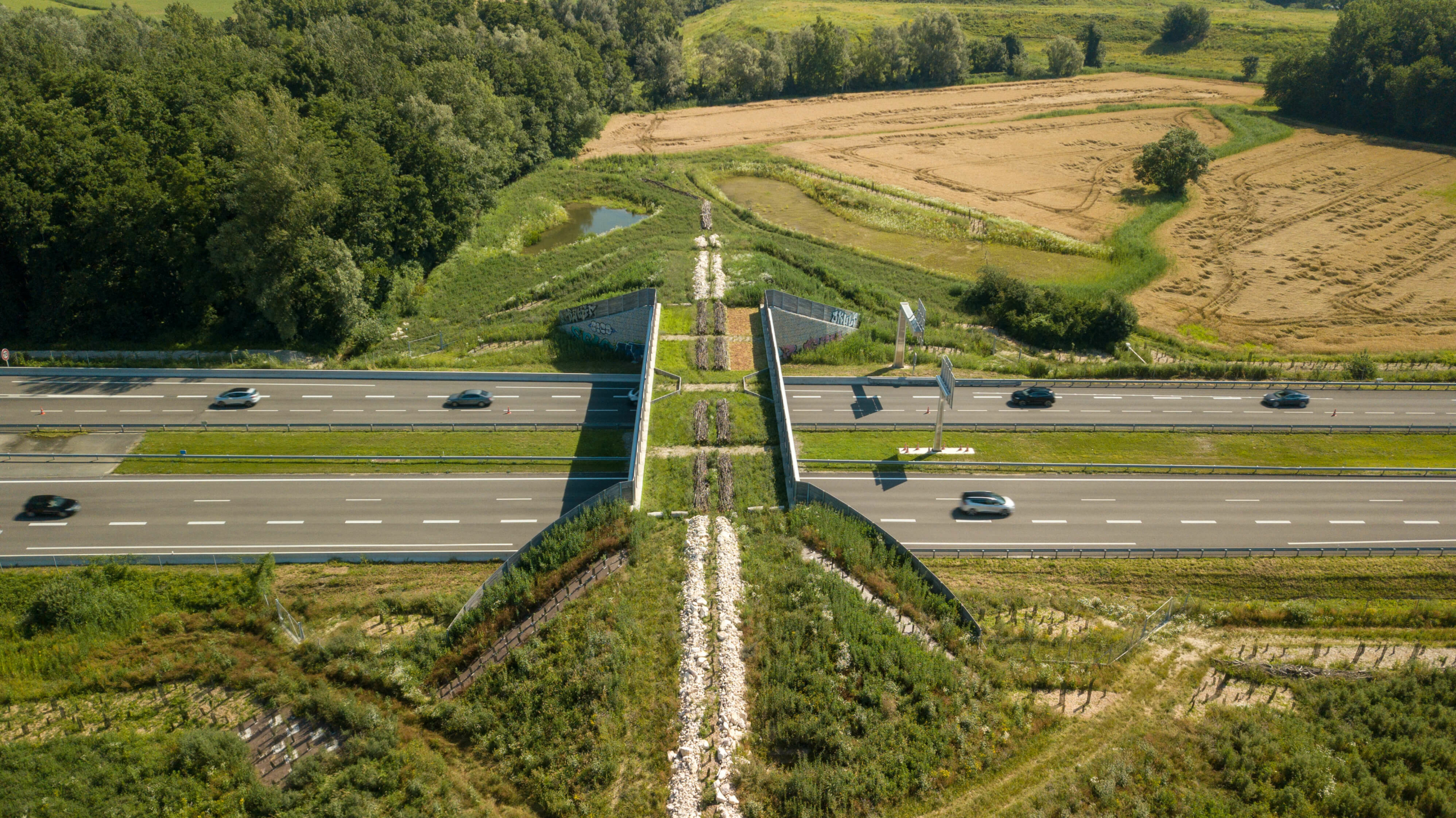
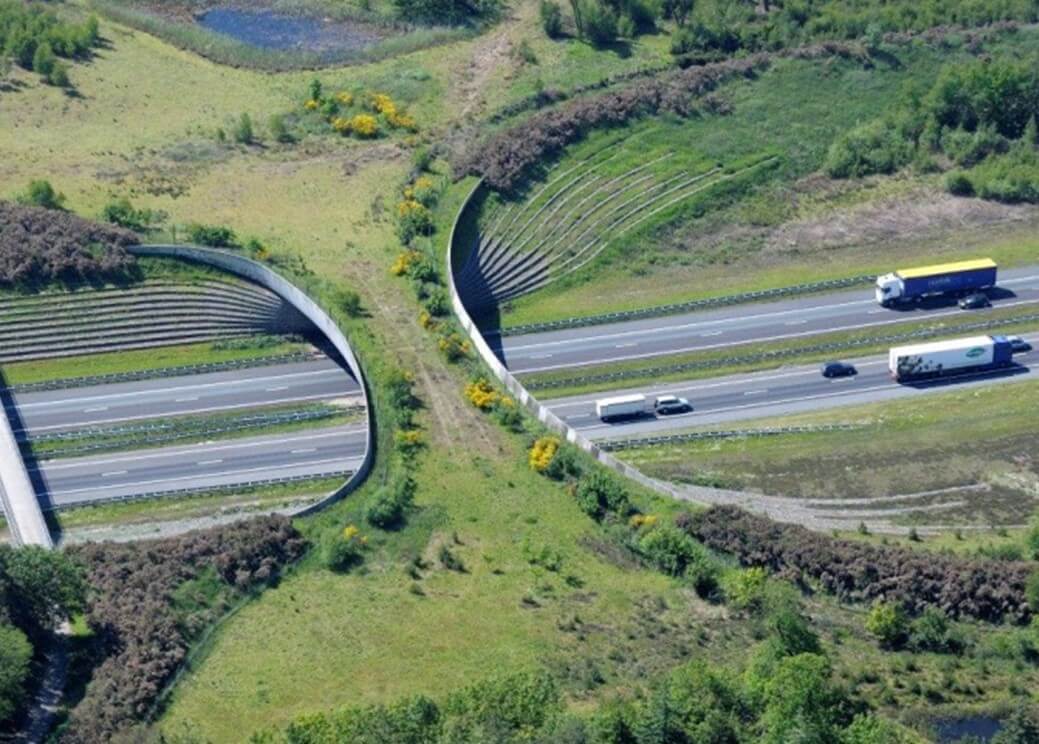
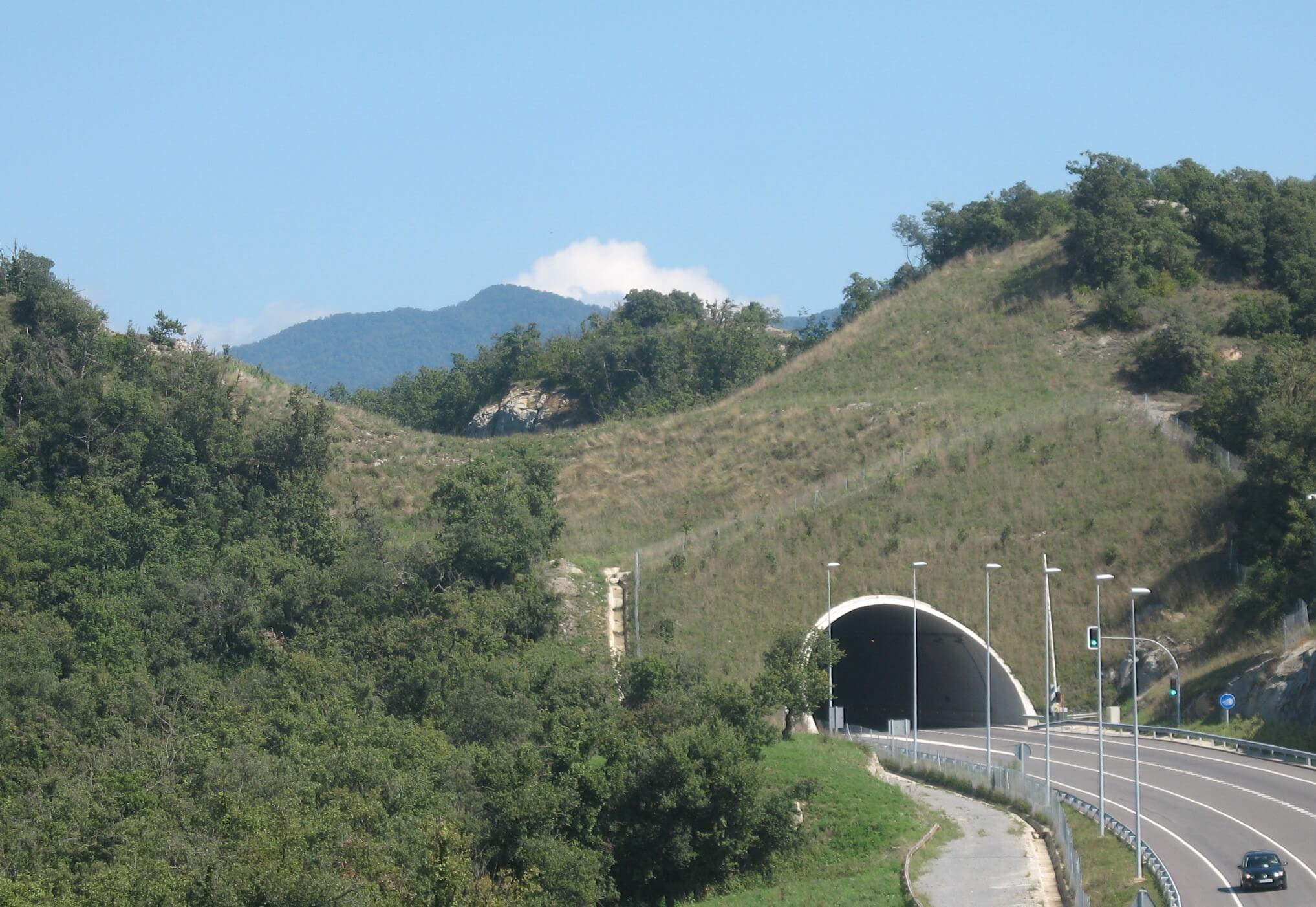
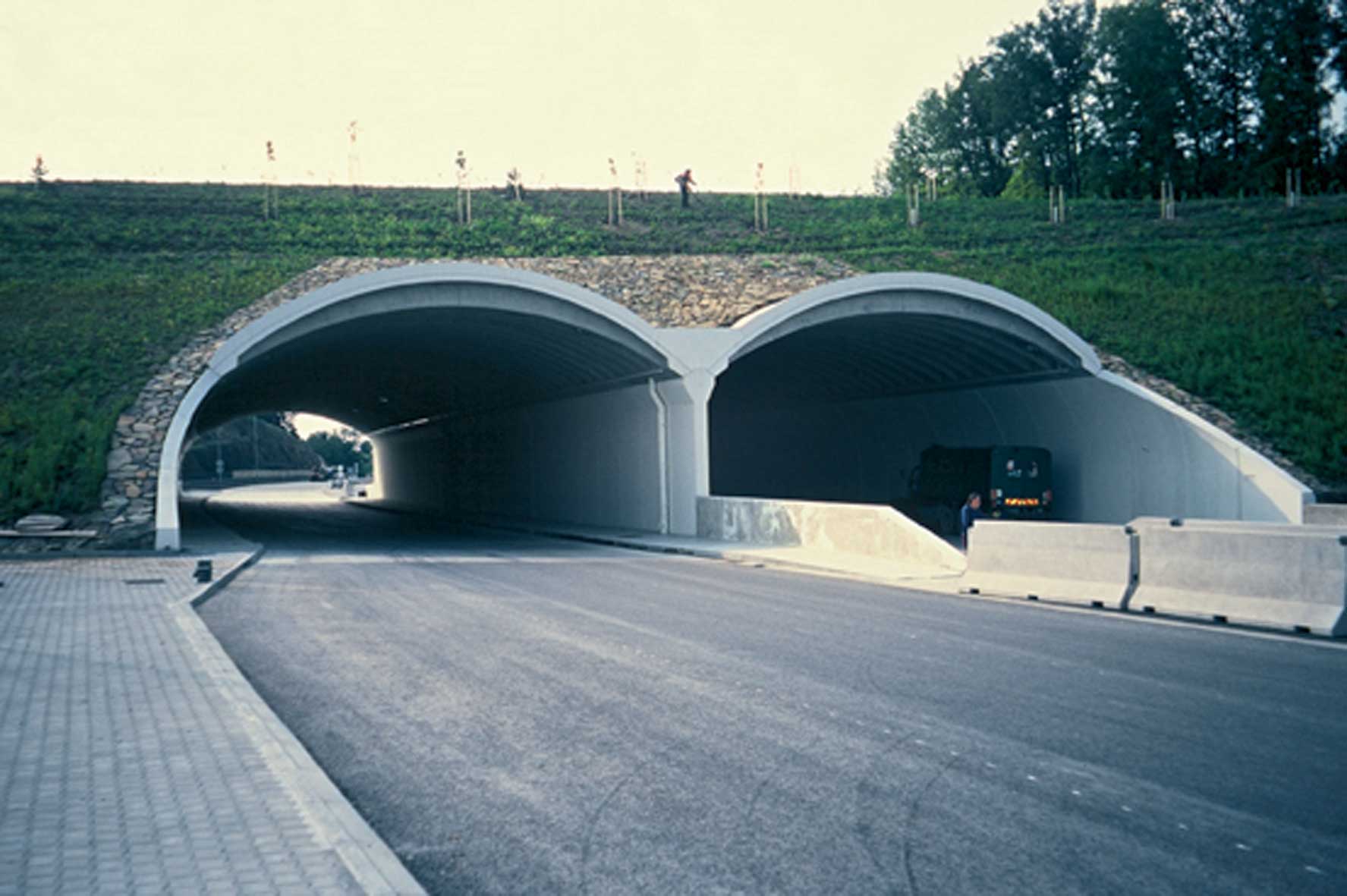
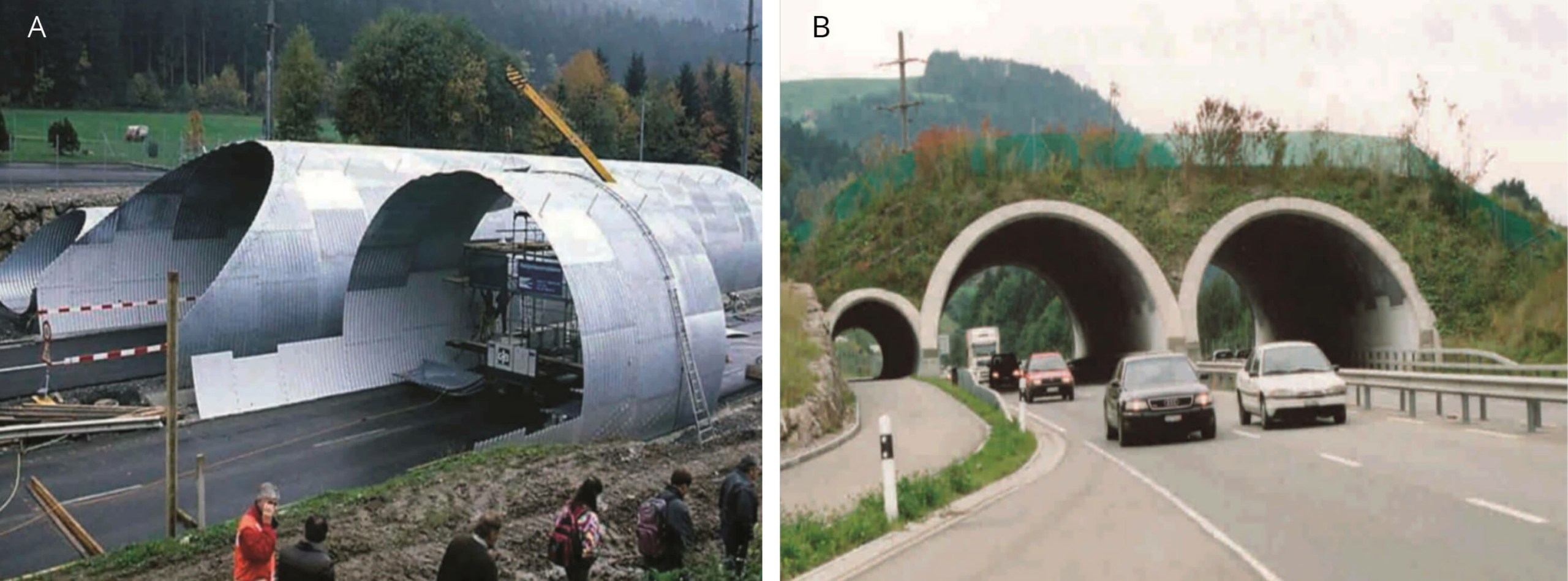
Innovative design alternatives can be applied to reduce costs. Even though the cost of a wildlife overpass usually makes up only a small part of the total for a road or railway development project, they are among the more expensive nature conservation measures in a planning scheme. The development of alternative, less expensive designs should therefore be encouraged.
- Utilising cut and cover structures reduces costs related to sourcing and transporting materials excavated when building infrastructure in hilly areas (Figure 5.5.14 and Figure 5.5.15).
- Repurposing decommissioned materials, i.e., bridge components, could be a good strategy to reduce costs if they are locally available or can be efficiently transported.
- Some designs, such as arched platforms, minimize the need for materials and, therefore reduce overall costs (Figure 5.5.16).
- Research on the application of innovative materials developed for other purposes should be explored as an option to minimize costs. Some options are geosynthetic reinforced soil buried bridges or ultra-high-performance fiber-reinforced concrete, resins and laminates.
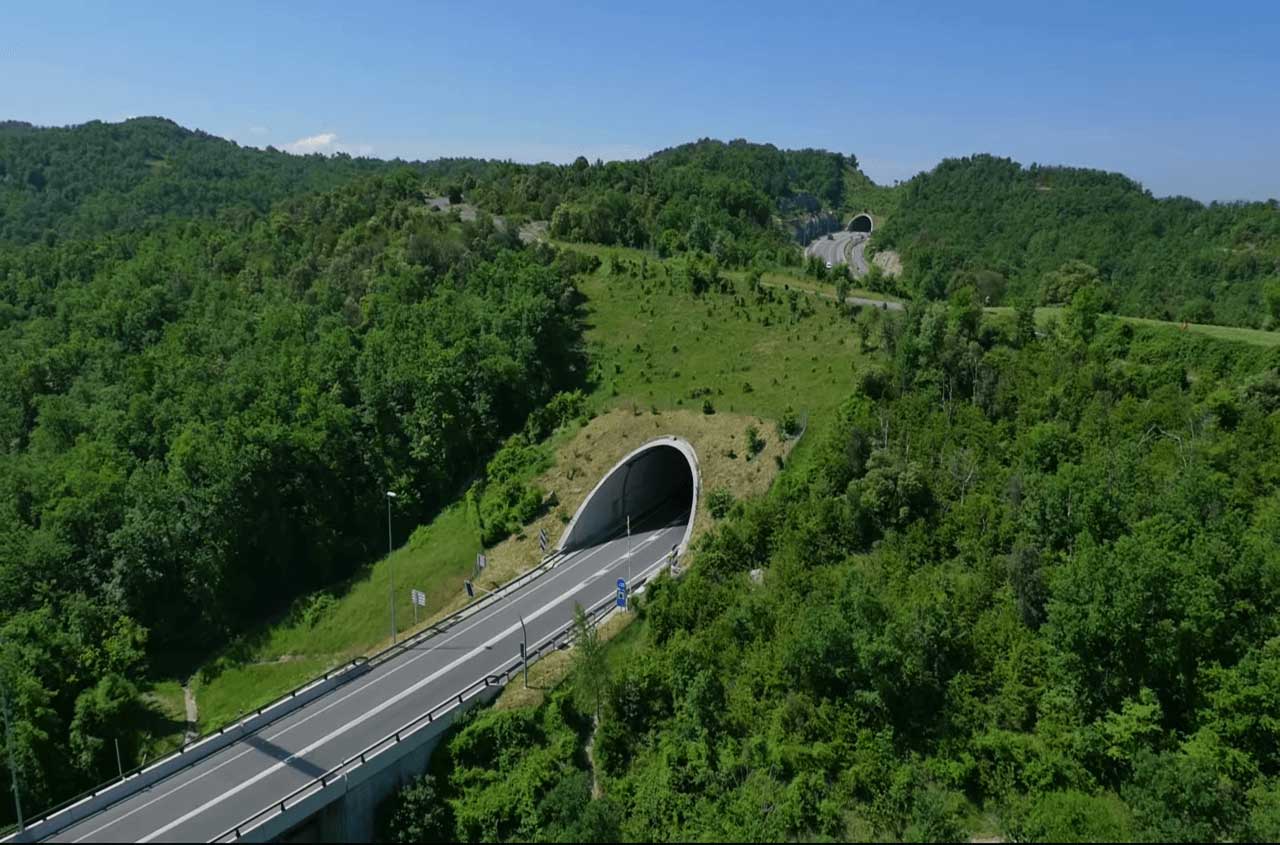
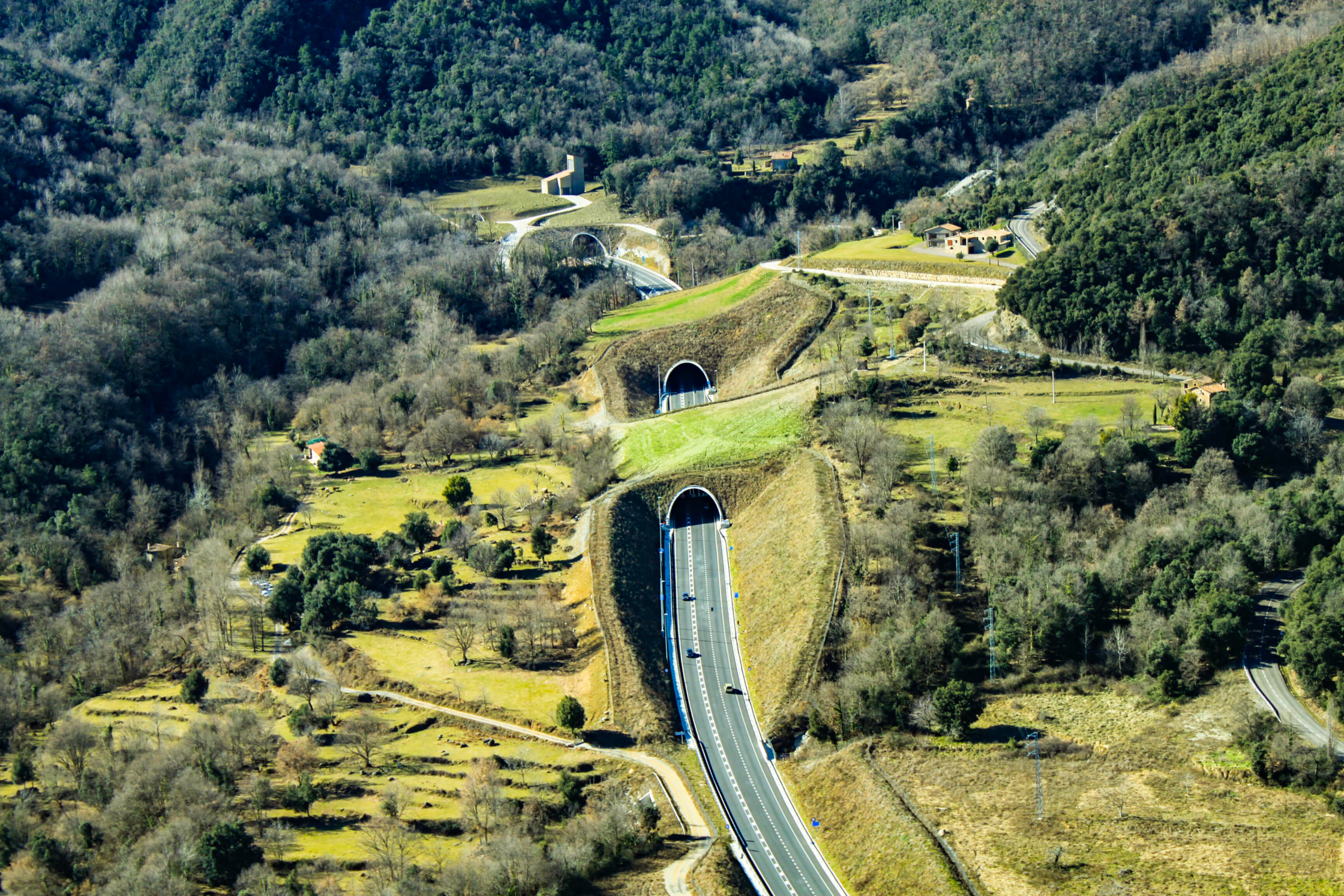
Points for special attention
- Passages are meant to be in use for a long time. Engineering works are developed for a period of 50 to 100 or more years. Safeguarding ecological corridors which allows access to the overpasses must endure for a similar time frame and should be part of spatial planning at local and regional level. In particular, no development (i.e: housing, local roads, industrial areas) should be permitted which would reduce the functioning of the overpass.
- A proper maintenance plan should be developed.
- Hunting in the vicinity of fauna passages should be restricted to an area designated according to the local conditions and the type of passage.
- Landscape and wildlife overpasses for exclusive use by wildlife are recommended as a general rule and especially if important daily or seasonal migrations of larger mammals have to be preserved or restored. Periodical inspections should guarantee that no inappropriate uses are occurring.
- In exceptional situations large landscape overpasses located in areas which are not in a priority area for biodiversity conservation could include trails used by pedestrians or small unpaved roads used by forestry or agricultural vehicles. In this case landscaping must be planned very careful to avoid any disturbance from human co-use to wildlife. Tracks must run along one of the outer edges of the structure to ensure a maximum width of vegetated and undisturbed area. Screens or earthen walls to separate the track and the vegetated area are required to reduce disturbance if traffic intensity is over 500 vehicles per day. Other recommendations for multiuse overpasses are described in Section 5.5.3 – Multiuse overpasses.
- Where access by walkers is a possibility, providing a narrow path to concentrate human movement is preferable to leaving the whole width of the passage open for use.
- Extra shelter on the landscape or wildlife overpass can be important for a wide variety of species. Tree-stumps, a heap of branches or stone piles can provide shelter for invertebrates and small vertebrates and are particularly important during the period in which the vegetation has not yet become well-established (Figure 5.5.17).
- Sand beds created to monitor tracks of animals can leave a long term gap in the continuity of the vegetation and may pose an obstacle for invertebrates. These should only be left for a limited period of time when the monitoring is taking place.
- Roads and forestry tracks which run parallel to the infrastructure may obstruct access to the overpass. They should be routed away from it.
